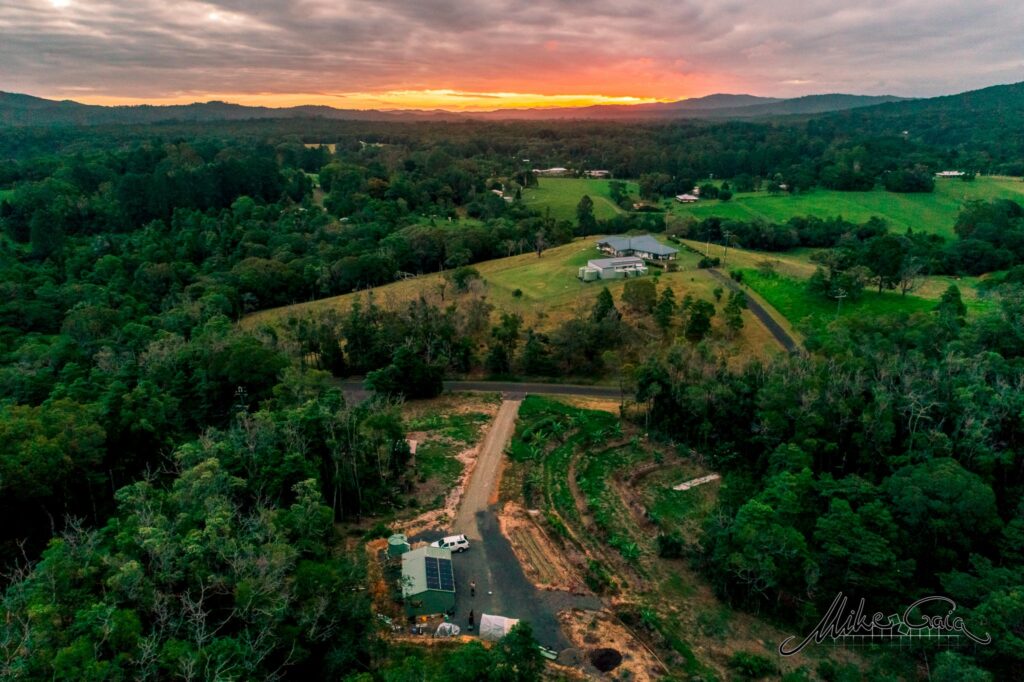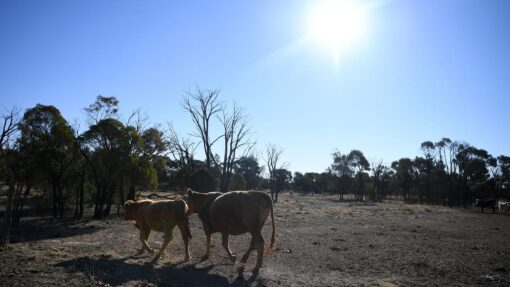Meet the man creating a forest of food in far north Queensland
Richard Dinnen - Queensland Editor |

It takes Mike Gailer several minutes to list all the things he grows on his two-hectare block of land near Kuranda in far north Queensland.
It’s a mouth-watering recital of more than 50 varieties of fruit, including finger lime, durian, chocolate pudding fruit, mango, and longan.
And there’s six kinds of banana, all sorts of beans, spices, sweet potato, taro, and cassava, growing in what Mike hopes will one day become a self-sustaining forest of food.
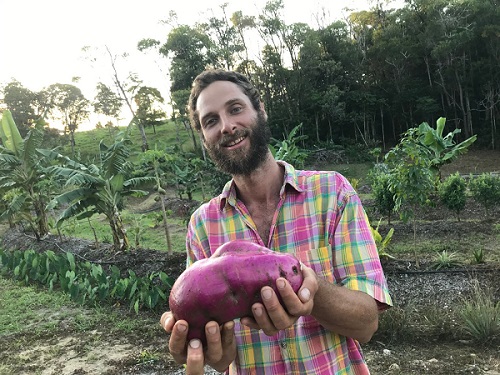
“It’s something that I’ve borrowed from agroforestry. It’s called alley cropping.
“I plant my crops in curved rows that follow contour lines across the landscape.
“I’m collecting water in tiers of ditches, called swales. They’ve got overflows so when one is full it goes in to the next one, and then the next one.
“In between the swales, there are rows of leguminous plants that can fix nitrogen in the air.
“They get chopped and dropped the whole time, and their foliage is used on the rows with the crops as a mulch, transferring their nitrogen onto the crop row.”
This arrangement makes best use of water and eliminates the need for chemical fertilisers.
Mike moved to far north Queensland from Austria 14 years ago.
He wanted somewhere tropical where he could become one of the locals and grow his own food.
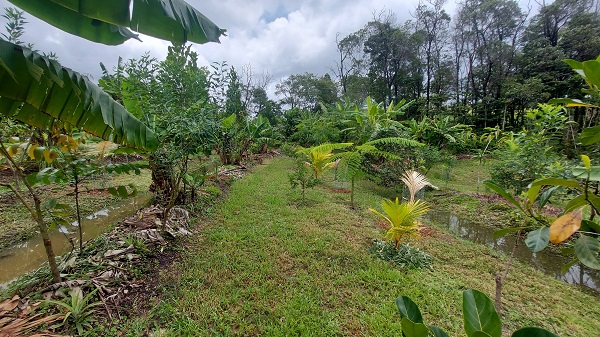
“I definitely grow a lot of food here for myself, but I grow more than that so there might be some commercial avenues to sell some produce.
“I’ve also got an idea to produce a value-added product, chocolate coated dried exotic fruit.”
Mike bought the land three years ago, balancing his full-time job as environmental supervisor at the nearby Skyrail Rainforest Cableway with getting the farm started.
“Up to about 50 years ago, it was all cleared for cattle grazing, and then it was reclaimed by the forest over time.
“In some areas, there was quite a lot of weed intrusion, especially lantana. It took me a long time to clear the worst of it. I think I’ve got rid of about 80 per cent of it, mostly by hand.”
Alongside the physical work, there’s been an impressive amount of research and thinking.
Native plants and rainforest trees sustain food crops by nitrogen transfer, and there’s a stand of trees as a windbreak against cyclones, an ever-present possibility during the summer months.
And Mike’s looking for ways to get the wallabies, bandicoots, and scrub turkeys working with him, rather than digging up or eating some of his tastiest crops.
“I’m not exactly farming in the same way as the forest would rejuvenate.
“Would I have to plant hundreds of trees and accept a certain percentage of tree mortality?
“Or how do you farm so you can incorporate those native animals? That’s my ongoing challenge.”
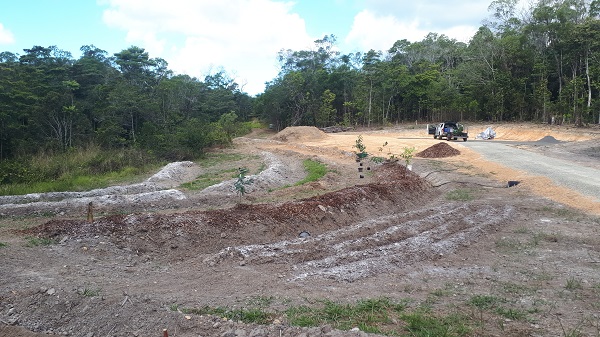
Mike does not subscribe to any one of the schools of regenerative agriculture, borrowing a bit from agroforestry, permaculture, and syntropic farming, adding his own insights and methods.
As Mike Gaia, he shares his ideas, and his questions, with thousands of people on his Gaia’s Garden in Kuranda YouTube channel.
“I’m trying to figure out how you create some sort of production system that eventually becomes self-sustaining, where you don’t have to do much anymore.
“It becomes like a natural process, where things just drop seeds everywhere and it becomes this wild food forest.
“This is probably the holy grail of permaculture.
“Mulching is one of those really essential parts, labour-intensive at first, but it will save you a lot of labour once you’ve got the soil covered.”
Long-term, Mike is working toward building a house, surrounded by his forest of edible things, a place where people come to learn and have community events.
“Working with plants, you’re out in the fresh air and the sun. That’s quite beneficial.
“You get a lot of rewards looking at things growing and being in touch with the fundamental basis of our life, which is the food that we grow and the soil it comes from.
“It’s definitely something that I want to keep doing. No matter how old I’m going to be, I’m always going to be in the garden.”
